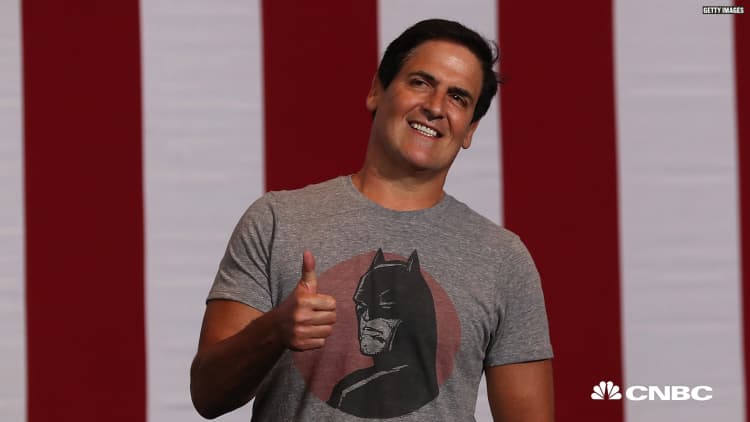Taking out student loans to pay for college is one of the biggest — and for many, scariest — financial decisions young people will make.
And with the average undergraduate student facing $30,000 in debt and the total outstanding student loan balance standing at over $1 trillion in America, it's no wonder.
When you factor in the cost of advanced schooling, like master's and professional degree programs, it can be enough to make anyone feel a bit sick. That is certainly the case for one New York-based, 33-year-old financial professional who had over $100,000 in student loan debt after getting his MBA.
Below, he shares his story.
I work in corporate finance. I build budgets, track financials and KPIs (key performance indicators), and help make investment decisions for my business on a daily basis. I get numbers.
But in 2011, I received my MBA and $100,000+ in student loans that came along with the degree. Fortunately, I had a solid internship in management consulting and a finance job waiting for me upon graduation. I could "afford" the loans.
Still, when I made my first payment, I threw up in my mouth a little. Every time I make a payment I do.
Five to six years ago, I got fixed rates of 6.55 percent and 8.25 percent for my subsidized and unsubsidized loans, respectively — 8.25 percent!!! Umm thank you, government, for helping to fund my education ... and you're welcome, loan defaulters, for covering your risk.
While many would tell you that MBAs are the safe bet as compared to other graduate degrees, the rates that the U.S. federal government provides for advanced degrees are the same across the board. So, where six-figure salaries and (comparatively) low likelihoods of loan default are fairly common for MBAs, the same cannot be said for postgraduates with master's degrees in psychology (no disrespect).
In other words, the government charges a premium to all borrowers to cover the risk of those who default, which is why the rates are so high. At least that's what I was told.
I set up a 25-year repayment schedule because it was all I could afford. When I had a few extra dollars, I chipped in a little more. Over 75 percent of my payment went to interest. Trying to see a change in principal was like watching paint dry. No, it was way worse ... paint dries in hours, not years.
With all the marketing dollars these refinance companies are spending, I finally started paying attention to the fact that I was throwing money away. Literally, I was paying more than was required; someone else was begging to charge me less for essentially the same service.
It took me four years to get the courage to explore better options. When I did, I had to make a choice: fixed or variable rate. Fixed would save me about 100 basis points (1 percent) on the current weighted average of my loans ... blah. Variable would save me about 350 basis points (3.5 percent) ... yaassss.
But variable meant that my rate could change. The refinance company gave me a cap; so no matter what happened, my rate would never go higher than 9 percent. With rates at historic lows, I knew the party wasn't going to last forever.
So I did what anybody with my skills would do. I built a model (read: Excel spreadsheet with assumptions/variables) to forecast my repayment plan. Building the model revealed two things:
1. I should have refinanced a long time ago, but who knew how low rates would go or how long they would stay?
2. If there are modest increases (i.e., 100-200 basis points over the next couple of years), I can significantly pay down the principal now, which would reduce the effective rate (i.e., weighted average of my loans).
Assuming rates do not skyrocket over the next few years meant that the variable rate was better than the fixed option they were offering. But, if things start escalating quickly, I could be out of luck.
I said a prayer and went variable. For about a year, I watched my principal drop dramatically.
And then, Trump got elected.
And then, the Fed raised the rate (albeit only 0.25 percent).
The writing is on the wall. Rates are rising ... and I'm nervous.
If you have an eye-opening personal finance story that you'd like to share, email me at makeitpitch@nbcuni.com with the details.



